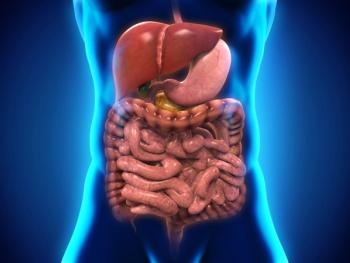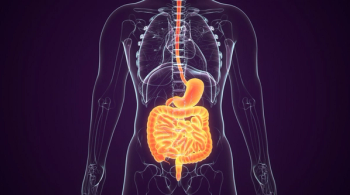
Oncology NEWS International
- Oncology NEWS International Vol 12 No 1
- Volume 12
- Issue 1
Pain Therapy Improves Quality of Life for Caregivers
ORLANDO-A randomized trial found that an implantable drug delivery system (IDDS) was superior to comprehensive medical management (CMM) in reducing pain among cancer patients and a quality of life analysis showed that decreasing pain improved quality of life not only for patients but also for their caregivers.
ORLANDOA randomized trial found that an implantable drug delivery system (IDDS) was superior to comprehensive medical management (CMM) in reducing pain among cancer patients and a quality of life analysis showed that decreasing pain improved quality of life not only for patients but also for their caregivers.
"When the patient’s pain is relieved, the relief is felt by all," reported Patrick J. Coyne, RN, MSN, at the 38th Annual Meeting of the American Society of Clinical Oncology (abstract 1428).
Pain was reduced in both the IDDS and the CMM arms after 4 weeks, although patients randomized to the IDDS arm did better, with 52% improving vs 39% in the CMM arm, said Mr. Coyne, clinical director, Thomas Palliative Care Unit, Virginia Commonwealth University Health System, Richmond. Opioid side effects were reduced in 50% of patients in the IDDS arm vs 17% in the CMM arm.
The study involved 200 patients with pain not controlled by standard treatment at 21 centers worldwide, including 5 outside the United States. The patients were prospectively randomized to IDDS using the Medtronic intrathecal drug delivery system (n = 101) or CMM (n = 99). Participating centers had to have a comprehensive pain management team that used IDDS as part of standard therapy, experience with Agency for Healthcare Research and Quality (AHCQ) cancer pain guidelines, and a close relationship with an oncology program.
Patients were well matched with respect to demographic characteristics. "There was a high incidence of neuropathic and nociceptive pain, higher than many people may appreciate," Mr. Coyne said. Cancer sites were essentially comparable in both arms. The lung was the most common site (19.8% of the IDDS arm and 25.5% of the CMM).
Patients had similar baseline opioid use, visual analogue scale (VAS) scores for pain, and National Cancer Institute Common Toxicity Criteria (CTC) scores. The morphine oral equivalent dose was 260 mg/d (range, 135 to 641) for the IDDS arm and 280 mg/d (range, 120 to 686) for the CMM arm, with patients in both arms taking an average of one adjunctive medication (range, 0 to 2).
Patients were assessed at baseline, 2, 4, 6, 8, 10, and 12 weeks, and then monthly over 6 months. Crossover to the other arm was allowed 1 month after enrollment for pain greater than 5 on the VAS or side effects.
Clinical Success
The primary objective was clinical success for the two treatment arms, judged by these endpoints: 20% improvement in VAS pain score, with equal or reduced CTC score, or equal VAS pain score with greater than 20% improvement in CTC score. The study was powered for this 20% change because "this is recognized as the smallest change that would impact patients," Mr. Coyne said.
Using these criteria for clinical success, significantly more patients achieved clinical success with IDDS (84.5%) than with CMM (70.8%) (see Table). Both pain and toxicity was reduced by more than 20% in 57.7% of the IDDS group vs 37.5% of the CMM group. Neither pain nor toxicity was reduced more than 20% in 11.3% of the IDDS arm vs 23.6% of the CMM arm.
"In this ‘as randomized’ analysis, survival 6 months after randomization was superior in patients in the IDDS group," Mr. Coyne said. The improved survival of the IDDS group has persisted since the first analysis (P = .04 at first analysis, P = .06 at full 6-month analysis). "Survival was not an endpoint of this study, so these results must be interpreted with appropriate caution," he added.
Quality of Life Issues
Secondary objectives of the study included changes in drug side effects and quality of life, including pain as measured by the brief pain inventory (BPI) for patients and for their caregivers.
Both pain and opioid toxicity correlated with a decline of quality of life for cancer patients, including interference with normal daily activities, such as walking, working, relationships with others, and sleeping. "The degree to which pain interferes with life becomes more apparent after most patients experience pain relief," Mr. Coyne said. "The correlation between opioid toxicity and pain quality-of-life measures was notable. The correlation is weak, but statistically significant."
Opioid Side Effects Reduced
Mr. Coyne noted that all opioid side effects were reduced in the IDDS arm. Fatigue and sedation (depressed level or consciousness) were significantly reduced (P = .05). Four weeks after randomization, the correlation between opioid side effects and BPI pain interference scores was completely lost in the IDDS arm, due to relief of side effects (P = .004), but in the CMM arm, the correlation was stronger than at baseline.
"Things just got worse in the CMM arm," Mr. Coyne commented.
Most patients in the IDDS arm had pain scores in the mild to moderate range after 4 weeks, while for patients in the CMM arm, pain scores seemed more prominently distributed in the moderate to severe range. "Average patient pain in the IDDS arm went down by 52%, 13% more than in the CMM arm," he noted.
The lower pain scores in the IDDS arm correlated with better total caregiver quality-of-life scores, as measured by the Family Quality of Life Questionnaire. Caregiver quality-of-life scores were not correlated with VAS pain scores for either group at the time of randomization. After 4 weeks on study, however, declining VAS pain scores for patients in the IDDS arm correlated with increasing quality-of-life scores for caregivers (P = .004)
Articles in this issue
almost 23 years ago
Phase II Trial of Phenoxodiol in Recurrent Ovarian Cancer Is launchedalmost 23 years ago
FDA Approves New Taxotere Indication as First-Line Therapy for NSCLCalmost 23 years ago
Most Cancer Pain Is Experienced at the Patient’s Homealmost 23 years ago
HHS Unites Its HIV Advisorsalmost 23 years ago
First NCI Health Disparity Grantsalmost 23 years ago
Inex to Seek FDA Approval for Onco TCS (Liposomal Vincristine)almost 23 years ago
CD40L-Expressing Dendritic Cells Eliminate Breast Tumors in Micealmost 23 years ago
Safe Handling Tips for Use of Testosterone Gelalmost 23 years ago
Lumpectomy/Mastectomy Equivalent in Early Breast Canceralmost 23 years ago
New Agent Tested in Refractory and Relapsed Ovarian CancerNewsletter
Stay up to date on recent advances in the multidisciplinary approach to cancer.

















































































